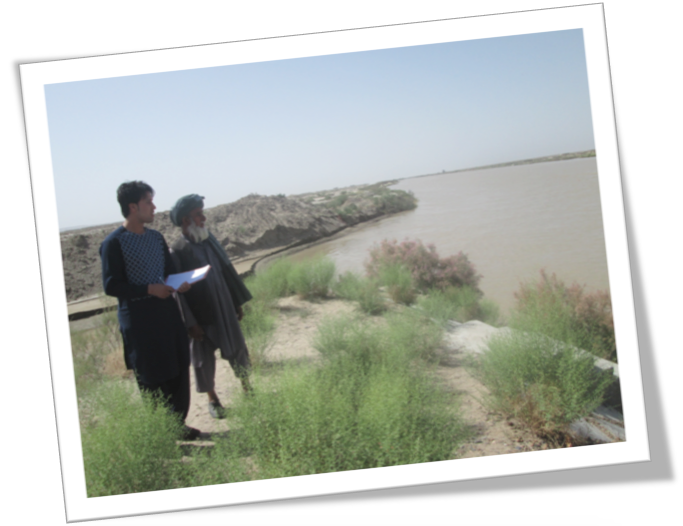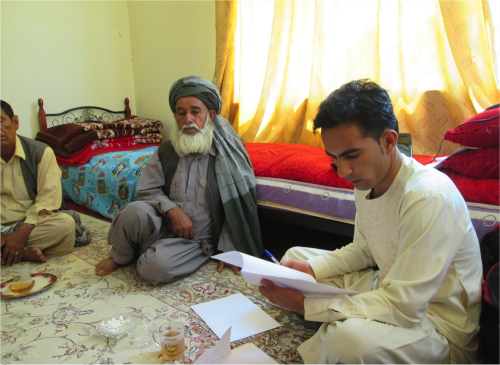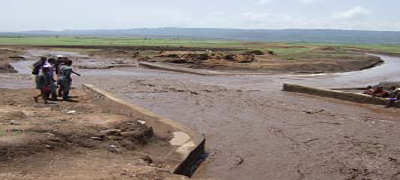By Frank van Steenbergen
June 5, 2016
Postcard from Nimroz, Afghanistan. Here is the Lashkari channel, running over a length of 47 kilometers and taking flood water from the Helmand River
Life has gone on here, though three decades of disturbance and turmoil have taken their toll. One is that there is not much economy apart from farming and that interest in agriculture remains high. The story of the channel is like many water systems in the world. In spite of increased pressure on the resource and in spite of much attention for water governance, the actual management of water on the ground – which is where things really matter – remains poor. The water distribution is ill-defined – the traditional rule (nitra) whereby water allocations are related to the land area irrigated is often deviated from, for reasons not always understood, and there are instances of powerful local parties developing new unauthorized canals, taking benefit from the lesser Law and Order situation. On the other hand, the increased interest in the land and water resources is increasing the demand to ‘sort things out’ and come to a better and more predictable allocation of water over the area.
Recently, Water Users Associations have been introduced but up to now the reception is lukewarm. Formal governance and democracy are not necessarily assets for local water management. The WUAs are seen as something somehow alien – not clear what improvement they bring over the traditional water masters (mirab) who are selected.
On the other hand, water masters sometimes have their authority undermined by being accused of sympathising with one political party: democracy is a multi-facetted thing, and not necessarily all is good.
There is a movement to invest more. One is in permanent water distribution structures – that are there and less prone to tampering. The other is to create more storage in the area – but then there needs to be a big exercise in settling the water distribution system.
This can be done. The regional good practice are the land and water rights systems in the spate systems in neighbouring Pakistan. These have a century long history – dating back from the time that the British Empire stretched its boundaries to the west – and had the spate area of what is now Pakistan on the dry western side of the Indus – included. Yet the Empire did not want to spend much funds on running the border area and one thing it did was to settle and codify the water rights on the dry rivers: determining the areas entitled to flood irrigation, the distribution of water, the obligation to maintain and respect the water allocations. This was enforced by a special local administration with magistrate powers. What this did was to bring prosperity and stability to the region. It shows that the investment in the right kind of water governance pays off – and has return to investment just like developing infrastructure has.

Ghulam Farooq Paradi, official mirab of Zaranj district


